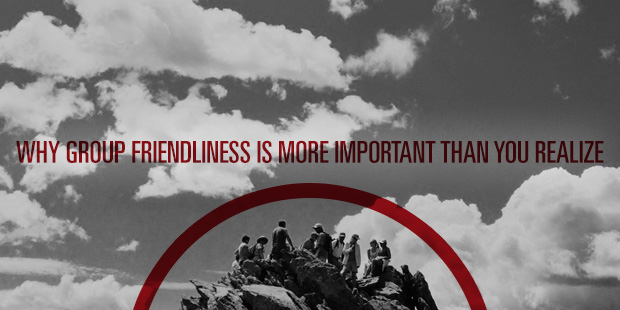I work with dozens of churches each year as I work with their leadership teams about small groups, spiritual growth and transformational leadership. Often I am contacted and asked some variation of this question: “Bill, can you help us build/grow our small group ministry?”
Before I answer yes, no or maybe, I engage in a conversation, asking lots of questions and getting to know the current state of the church. As it relates to group life, I discover that churches fall into four categories:
- Group-focused
- Group-proficient
- Group-wary
- Group-hostile
You might be wondering why a “group-hostile” church would even ask me to help them build groups. Reality is, they do not see themselves as group hostile, but I do. So allow me to unpack each of these and see where your church is these days.
Group-focused: In this church groups play a central role is spiritual formation and providing a sense of connection or belonging (I won’t get too caught up in terminology at this point). Church members and regular attendees are very aware groups exist and usually know how to get involved in one. Even most visitors will have some exposure to the idea. It is part of the philosophy of ministry, part of the DNA, regardless of the level of actual participation. There is dedicated staff and core volunteer support, with a mandate to grow groups or various kinds so people can have a variety of experiences in community.
Group-proficient: This church views groups as helpful, knows what they look like and how to lead them, and sees them as a vital option for people (along with classes, serving and other growth environments or experiences.) Groups are advertised, are peppered throughout the church, and usually have some kind of staff or key volunteer support. Group life may not lie at the center of the church strategy for making disciples, but groups are nonetheless close to that center and many members will be in them (or were in them) at some point.
Group-wary: Such churches are exploring group life but are not sure where groups fit in, whether they will create tension or competition with other ministries, if they will be too “psychology” focused, or will create a life of their own and become little islands separate from the larger body. There is a sense that groups work, but fear that they might cause more problems than they are worth.
Group-hostile: A church that is “hostile” toward group life – yet still asks me to help – is usually a church that 1) is still recovering years after a really bad group experience, 2) cannot imagine a small group without an intense bible-study focus, has virtually no culture/value of community life anywhere in the church, 4) does not believe in any kind of official church meetings off campus, and/or 5) has senior leadership that is highly controlling or has a fear-based theology, ignoring the priesthood of all believers.
To be clear, ANY of these four can experience varying levels of group friendliness. Even a “group-focused” church may tolerate only certain kinds of groups and be quite averse to others. Some have a one-size-fits-all approach, and your ideas may not fit. Or, despite the prevalence of group life, there is little structure, vision, resourcing or training to support the effort. As a result, groups flounder, new people cannot connect, or a kind of elitist mentality develops among the already connected.
And, at the other extreme, a “group-hostile” church might be more “group-friendly” than first appears. I have often found that there are groups everywhere in almost any church – people just don’t see them as such, because they have a pre-conceived notion of what constitutes a small group. In other words, there is no small group “program” (about which there may be fear or hesitancy to launch), but people are “grouping” without much resistance. (To be sure, some churches think small groups are part of some Satanic ritual, and definitely DO NOT invite me to help!).
Here 5 ways for any church to increase its group-friendliness.
1) Create a culture for community. Teach the value of relational, spiritual growth as vital to the church. Offer groups as a way to experience this.
2) Support the effort. Provide staff (or quality volunteers), ample financial resources, training, communication and times for celebrating transformation of lives though groups.
3) Encourage “communal” experimentation. (Ok, I am not talking about something some of you did in California in the late 70’s.) Allow a variety of groups to form of various sizes and formats, and study them. See what works, how participants are growing, what processes are helpful, what kind of leadership is needed, how and where they can meet, and so on. As friend Heather Zempel reminds us, “Everything is an Experiment!”
4) Get personally involved. Launch a new kind of group yourself group. No need for a big announcement and banners in the hallways. Get a few people together around you – you should lead the early efforts.
5) Be patient with resistance. As I often tell leadership teams I work with, “Building this ministry takes a thousand cups of coffee.” Sometimes this only grows one conversation, one prayer, one leader, one member, one meeting at a time. Not every ministry looks like the church in Acts 2 on the first day. Ask most church planters, especially in multicultural settings, about perseverance!
So where is your church? What needs to happen for you to become more group friendly?
Read more from Bill here.

Tags: Bill Donahue, Discipleship, Multiplication, Small Groups
|
What is MyVisionRoom? > | Back to Process >






























